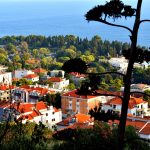June the 29th, 2023 – Unless you’ve been living under a rock, you’ll know that Croatian pensions aren’t enormous. More and more Croatian pensioners are choosing to remain in some form of employment.
As Poslovni Dnevnik writes, Croatian employers are beginning to rely more and more on engaging Croatian pensioners, and the increasing cost of living is forcing said Croatia pensioners back into employment of some kind.
Back in May, 28,881 Croatian pensioners worked half-time, which is 4,733, or 21 percent more than in the same month last year.
The data reveals the counties in which this is most common
The above is just a small bit of the data from the Croatian Institute for Pension Insurance, which reveals, among other things, that there are more pensioners than insured persons, i.e. those of employment age in three Croatian counties; Lika-Senjska, Virovitica-Podravska and Požega-Slavonia.
The government is making this practice easier for all involved
The number of pensioners who choose to increase their household budgets each month by working up to half the time is increasing year by year because the government is constantly expanding the circle of those who can work without losing their pension.
As such, in addition to those individuals drawing their pensions at the correct time, in 2019, those who decided to retire early also received this right. Back in 2021, individuals receiving a family pension were also permitted to keep working if they wanted to, and since the beginning of last year, this right has also been given to soldiers, policemen and war veterans.
Those who worked the longest in their lives continue to work in retirement
The data also shows that those who worked the longest while they were active workers continue work the most in retirement.
60 percent of retirees are drawing their pensions at the normal age, 22 percent are beneficiaries of early retirement, and about four percent are beneficiaries of family pensions, which are the lowest on average, which means that the sole motive for work isn’t only poverty in retirement.
In addition, 8.21 percent of active military personnel are among those Croatian pensioners who are currently still working, and the smallest number are those who have retired, 5.19 percent.
The largest number of pensioners were hired by traders, 4,495 of them, which is almost 17 percent of all working pensioners.
However, trade employers say that there will be layoffs in that industry owing to the ban on working on Sundays, that is, the possibility to work for only sixteen Sundays a month. The trade sector is followed by the processing industry. Then comes the accommodation, food preparation and service sector with more than three thousand pensioners working in each of those fields, writes Novi list.
Some are directors
It is also interesting that the number of Croatian pensioners and the number of those who work as leaders and members of legislative bodies, officials of state bodies and directors has stabilised at more than three thousand. Although there’s no detailed structure, in a large number of cases we’re talking about people who retired from director positions in private or even their own companies and returned to the same job almost the same day. In addition to receiving their pension from the state, they also receive a salary, their combined income is probably the same, but they cost the company much less.
Most working pensioners are in Zagreb
Most pensioners who have chosen to continue working work in Zagreb. There are 7,788 of them to be precise, which accounts for almost 29 percent of all pensioners who have kept working part-time.
In Primorje-Gorski Kotar County at the end of May, 2,678 pensioners were working up to half the working time and, apart from Zagreb, only Split-Dalmatia County has a larger number of employed pensioners.
40 percent of working pensioners are on the coast
In Adriatic Croatia, which includes seven counties with access to the sea, almost ten and a half thousand pensioners have kept on working, that is almost 40 percent of all pensioners who are still economically active. At the same time, the counties of Split-Dalmatia and Dubrovnik-Neretva have the highest rates of registered unemployment, right behind the counties of Slavonia.











